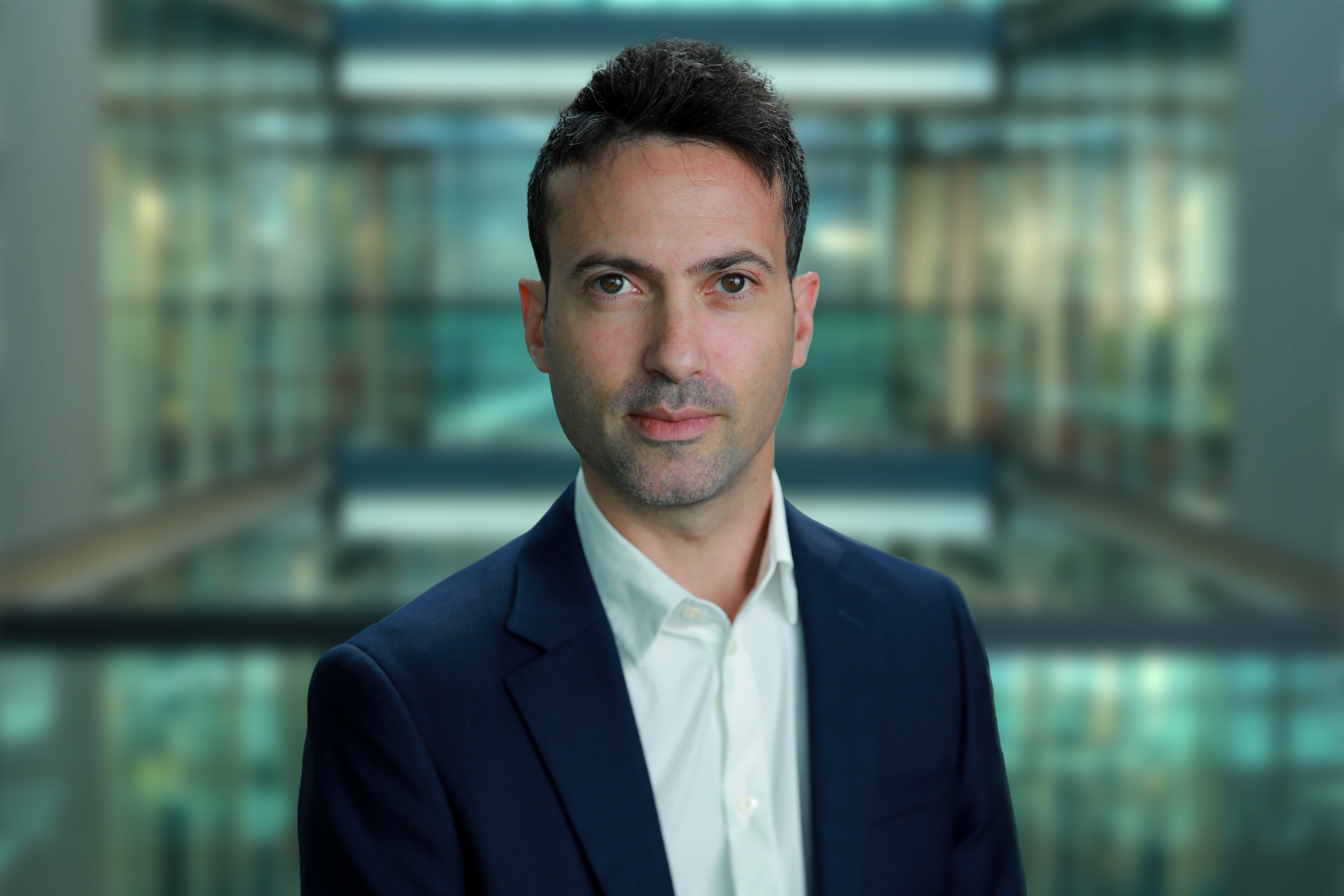EY refers to the global organisation, and may refer to one or more, of the member firms of Ernst & Young Global Limited, each of which is a separate legal entity. Ernst & Young Global Limited, a UK company limited by guarantee, does not provide services to clients.
Deals are back: Surge in life sciences M&A fueled by sector's capital reserves and quest for new revenue growth
- Life sciences M&A spend rises to US$191b in 2023, up 34% from 2022, as topline pressure and the looming patent cliff add urgency to dealmaking
- Oncology remains the biggest target for dealmaking with 2023 investment hitting US$65.2b
- The return of big pharma pushed average deal size up 77%, and this trend will continue to drive increased M&A spending in 2024
The global life sciences industry has once again embraced big deal making, with mergers and acquisitions (M&A) investment totaling US$191b to 10 December 2023, compared with US$142b in 2022. Though deal volume fell, with the total M&A spend representing only 118 completed deals, compared with 126 in 2022, the average deal size increased significantly in 2023.
According to the 12th edition of the annual EY M&A Firepower report, which tracks global M&A investment in life sciences, the industry’s return to M&A is being driven by topline pressures, key products losing their patent protection in the next five years (“patent cliff”) and the need to do the right deals now to deliver new revenue growth and value into the future. The industry also holds near-record levels of Firepower – defined as a company’s capacity to do M&A based on the strength of its balance sheet.
Big pharma deploy their firepower
The EY research found that one of the fundamental reasons behind the 2023 rebound is the increased involvement in M&A from the life sciences sector’s biggest players – the pharma multinationals. These companies dominated industry dealmaking, with more than two-thirds (69%) of M&A investment coming from big pharma, compared with just 38% in 2022. Eleven large pharma companies all signed at least one deal of US$1b or more in value, Merck broke the US$10b barrier with its acquisition of immunology specialist Prometheus in April, while the largest deal by a significant margin was Pfizer’s acquisition of Seagen for US$43b in March.
These major investments meant that despite the dip in deal volume, the average biopharma acquisition size increased by 77% in 2023 (US$1.23b in 2022 vs US$2.18b to Dec 10, 2023). Big pharma is set to keep signing these bigger deals in 2024, signaling a major return to M&A.
Will the trend continue into 2024?
According to the report, there are three key reasons to expect the rising trend in M&A spending to continue and accelerate in 2024 and beyond: the biopharma industry still holds near-record levels of M&A Firepower; the industry faces major revenue challenges in the next five years and needs to secure inorganic growth; and economic conditions mean there is a buyer’s market favoring acquiring companies.
Despite its increased M&A investment, the industry still commands more than US$1.37t in dealmaking capacity – higher than at any point in the history of the Firepower report apart from 2022.
Securing value through M&A
However, while there is money to invest in acquisitions, the challenge for companies across the life sciences sector is ensuring they do the right deals to secure value in the future.
The uncertainties facing biopharma dealmakers go beyond the general volatility in the global operating environment, and include the regulatory risks posed by new legislation such as the US Inflation Reduction Act (IRA). This initiative will potentially constrain companies’ ability to set drug prices in the future, making it more difficult to accurately evaluate portfolio and pipeline assets of potential targets.
To realize value from their acquisitions, life sciences companies need to focus on the north star of delivering better outcomes for patients – including an improved, more personalized health experience. They must also work to ensure they have the right processes, discipline and execution to deliver value creation from dealmaking.
M&A targets: oncology and rare diseases
The huge growth potential of the oncology market is reflected in companies’ M&A spending over the past five years, with oncology dominating industry acquisitions in both value and volume terms – in 2023, M&A investment in oncology assets reached US$65.2b. The intense competition for these assets has also resulted in companies paying higher multiples than for targets in other therapeutic areas. With multiples for oncology acquisitions over the past decade averaging 11.9 times total target company revenues, acquirers must work to ensure they extract value from their deals in this space.
As well as oncology, the changing regulatory landscape is leading to other assets becoming attractive acquisition targets. With legislation such as the IRA unlikely to affect the price point for orphan drugs, companies specializing in rare diseases have become significant M&A targets, commanding high multiples and driving some of the biggest deals of the past 12 months.
Subin Baral, EY Global Deals Leader, Life Sciences, says:
"In 2023, we witnessed the resurgence of significant dealmaking within big pharma. Faced with the imminent patent expiration of several key products in the next five years, the biopharma industry recognizes M&A as a strategic avenue for securing growth. The challenge for companies across the sector is to ensure they make the right deals now to deliver lasting value into the future. Identifying the best partners, dealmaking structures, innovations, therapeutic areas and strategic approaches is crucial as we navigate a period of upheaval in the global business and regulatory environment.
“However, life sciences companies must understand that doing the right deals is a process rather than a single transaction. They will need the right people, processes and governance to make each partnership work on its own unique terms. Even with the unsettled operating environment we expect to see continuing into 2024, the life sciences companies that can recognize and deliver on these dealmaking imperatives will be well placed to secure value far into the future.”
Securing dealmaking value in a shifting life sciences landscape
While there is ultimately no one-size-fits-all answer for which deals will deliver the best returns, the EY M&A Firepower reports highlights five strategies that give companies a better chance of securing value in the future and ensuring their M&A strategies help build that value:
- Build more focused business models
- Identify the therapeutic areas where you can add value
- Be aware of emerging disruptive new opportunities
- Find the right balance between acquisitions and partnerships
- Build the right execution strategies to deliver value from M&A
The full EY report is available at ey.com/firepower.
-ends-
Notes to editors
About EY
EY exists to build a better working world, helping to create long-term value for clients, people and society and build trust in the capital markets.
Enabled by data and technology, diverse EY teams in over 150 countries provide trust through assurance and help clients grow, transform and operate.
Working across assurance, consulting, law, strategy, tax and transactions, EY teams ask better questions to find new answers for the complex issues facing our world today.
EY refers to the global organization, and may refer to one or more, of the member firms of Ernst & Young Global Limited, each of which is a separate legal entity. Ernst & Young Global Limited, a UK company limited by guarantee, does not provide services to clients. Information about how EY collects and uses personal data and a description of the rights individuals have under data protection legislation are available via ey.com/privacy. EY member firms do not practice law where prohibited by local laws. For more information about our organization, please visit ey.com.
This news release has been issued by EYGM Limited, a member of the global EY organization that also does not provide any services to clients.
About the EY M&A Firepower report
Now in its 12th year, the EY M&A Firepower report measures companies’ capacity to fund transactions based on the strength of their balance sheets. It has four key inputs: 1. cash and equivalents; 2. existing debt; 3. debt capacity, including credit lines; and 4. market capitalization. In constructing the model, the following assumptions were made: first, a company will not acquire targets that exceed 50% of its existing market capitalization; second, the debt/equity ratio of the combined entity created by a transaction cannot exceed 30%.
While some life sciences companies have made acquisitions that go beyond these upper limits, the intent is to apply a uniform methodology to measure relative changes in Firepower. EY Firepower measures capacity to conduct M&A transactions financed with cash or debt. It does not measure the ability to conduct stock-for-stock transactions. However, increases in a company’s stock price do boost its Firepower under the EY Firepower’s formula, largely because equity enables companies to borrow more to finance transactions.
About EY Health Sciences and Wellness
The rise of the empowered consumer, coupled with technology advancements and the emergence of digitally focused entrants, is changing every aspect of health and care delivery. To retain relevancy in today’s digitally focused, data-infused ecosystem, all participants in health care today must rethink their business practices, including capital strategy, partnering and the creation of patient-centric operating models.
The EY Health Sciences and Wellness architecture brings together a worldwide network of 34,000 professionals to build data-centric approaches to customer engagement and improved outcomes. We help our clients deliver on their strategic goals; design optimized operating models; and form the right partnerships so they may thrive today and succeed in the health systems of tomorrow. We work across the ecosystem to understand the implications of today’s trends, proactively finding solutions to business issues and to seize the upside of disruption in this transformative age.
Related news
LONDON, 8 JANUARY 2024. The global life sciences industry has once again embraced big deal making, with mergers and acquisitions (M&A) investment totaling US$191b to 10 December 2023, compared with US$142b in 2022.
LONDON, 27 NOVEMBER 2023. The EY organization today announces an alliance between Aspen Technology, Inc. (NASDAQ: AZPN), a global leader in industrial software, and Ernst & Young LLP (EY US).
HONG KONG, 24 NOVEMBER 2023. Asia-Pacific CEOs recognize the potential of artificial intelligence (AI), but most are encountering significant challenges in formulating and operationalizing related strategies, according to the latest EY CEO Outlook Pulse survey.
Asia-Pacific CEOs eye AI and dealmaking, as fears of a severe recession fade
HONG KONG, 6 September 2023. Asia-Pacific CEOs are embracing opportunities created by AI as part of their digital transformation strategies, but also remain wary of unknown, unintended consequences.
London, 10 August 2023: Dealmaking is currently a top priority for CEOs across Europe’s financial services sector, according to the latest EY CEO Outlook Pulse Survey, which found 94% of respondents expect to actively pursue strategic transaction activity over the next 12 months.
CEO confidence in artificial intelligence tempered by social, ethical and security risks
LONDON, 24 JULY 2023. CEOs globally are embracing opportunities created by AI, but also remain wary of unknown, unintended consequences, according to the findings of the latest EY CEO Outlook Pulse survey.








